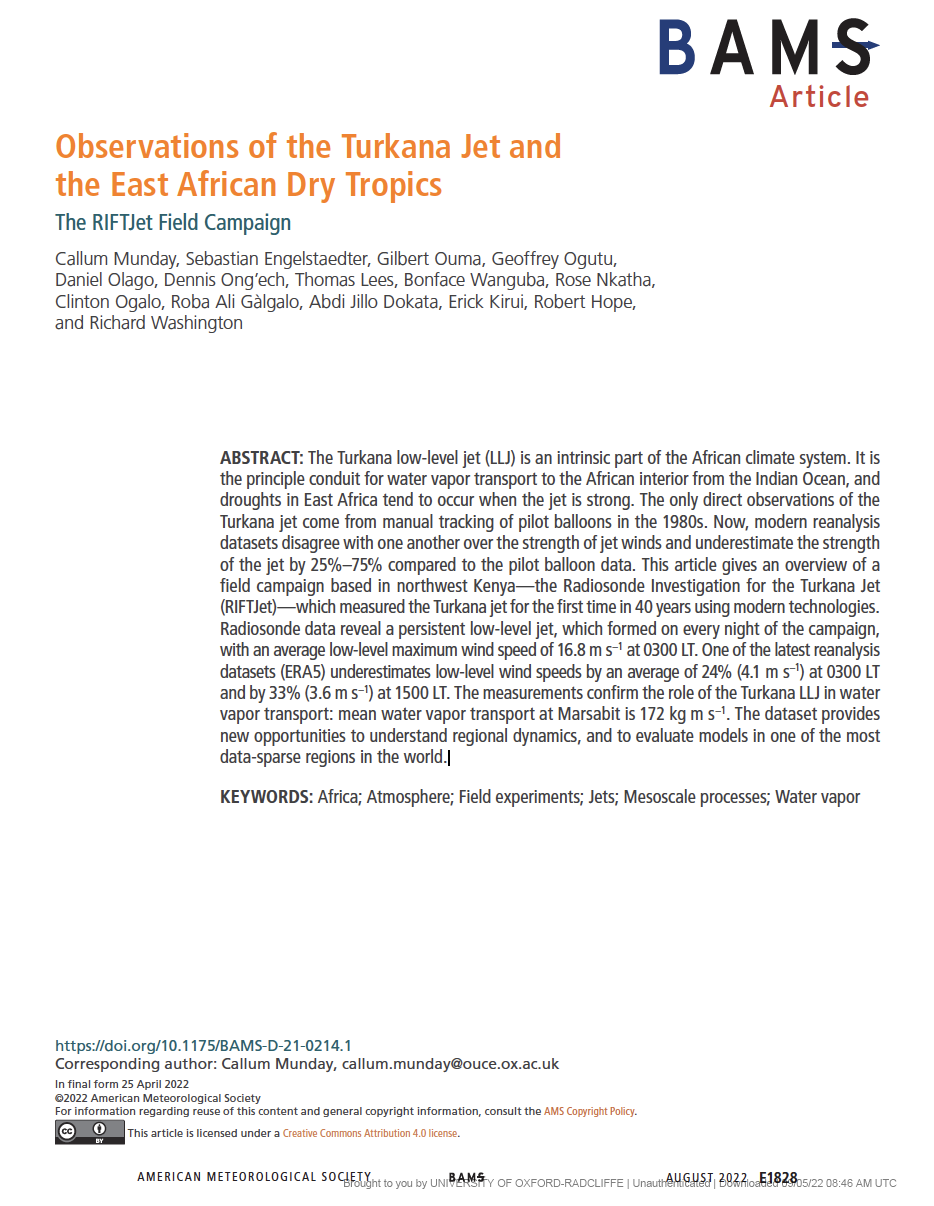Authors: Callum Munday, Sebastian Engelstaedter, Gilbert Ouma, Geoffrey Ogutu, Daniel Olago, Dennis Ong’ech, Thomas Lees, Bonface Wanguba, Rose Nkatha, Clinton Ogalo, Roba Ali Gàlgalo, Abdi Jillo Dokata, Erick Kirui, Robert Hope, and Richard Washington
The Turkana low-level jet (LLJ) is an intrinsic part of the African climate system. It is the principle conduit for water vapor transport to the African interior from the Indian Ocean, and droughts in East Africa tend to occur when the jet is strong. The only direct observations of the Turkana jet come from manual tracking of pilot balloons in the 1980s. Now, modern reanalysis datasets disagree with one another over the strength of jet winds and underestimate the strength of the jet by 25%–75% compared to the pilot balloon data. This article gives an overview of a field campaign based in northwest Kenya—the Radiosonde Investigation for the Turkana Jet (RIFTJet)—which measured the Turkana jet for the first time in 40 years using modern technologies. Radiosonde data reveal a persistent low-level jet, which formed on every night of the campaign, with an average low-level maximum wind speed of 16.8 m s−1 at 0300 LT. One of the latest reanalysis datasets (ERA5) underestimates low-level wind speeds by an average of 24% (4.1 m s−1) at 0300 LT and by 33% (3.6 m s−1) at 1500 LT. The measurements confirm the role of the Turkana LLJ in water vapor transport: mean water vapor transport at Marsabit is 172 kg m s−1. The dataset provides new opportunities to understand regional dynamics, and to evaluate models in one of the most data-sparse regions in the world.

